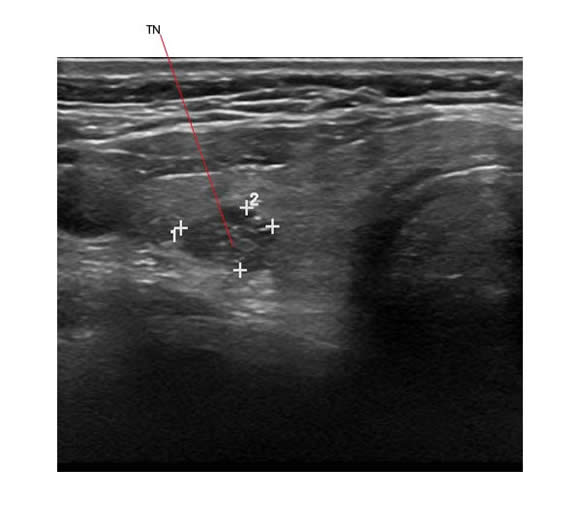Endocrine
Thyroid Nodules and Carcinoma
Thyroid nodules and cancer are also reported at a higher rate among childhood cancer survivors compared with the general population.6
This risk is again particularly high in certain subgroups of this population and is largely related to previous radiation therapy (RT) exposure:
- Hodgkin lymphoma (HL) survivors have been found to have thyroid nodules 27 times more frequently than the general population6
- This risk is increased further in survivors that:
- Received RT doses of 25 Gy or greater
- Had been diagnosed 10 years or more earlier
- Who were female6
Data from the Childhood Cancer Survivor Study showed that HL survivors had a relative risk of thyroid cancer of 18.3 compared to the general population.6
All of these cases were well differentiated cancers, with the majority being papillary carcinoma.6
Interestingly, this risk increased with RT dose up to 29 Gy, but then decreased with doses of 30 Gy and greater.10,11 This may be due to a cell-killing effect of high-dose RT and provides support that lower-dose radiation has carcinogenic effects.10,11
Chronically untreated hypothyroidism with elevated TSH levels probably contributes to the increased risk of thyroid nodules and cancer - but very minimally compared to RT.
Despite the evidence that thyroid neoplasms are more prevalent in this population, childhood cancer survivors, particularly those who received RT to the mantle and neck, likely received more frequent surveillance than the general population and may have findings that would not have been otherwise clinically significant or detectable.5
Below is an ultrasound image of a thyroid nodule (TN) in a patient who had a previous history of RT for Hodgkin lymphoma.


